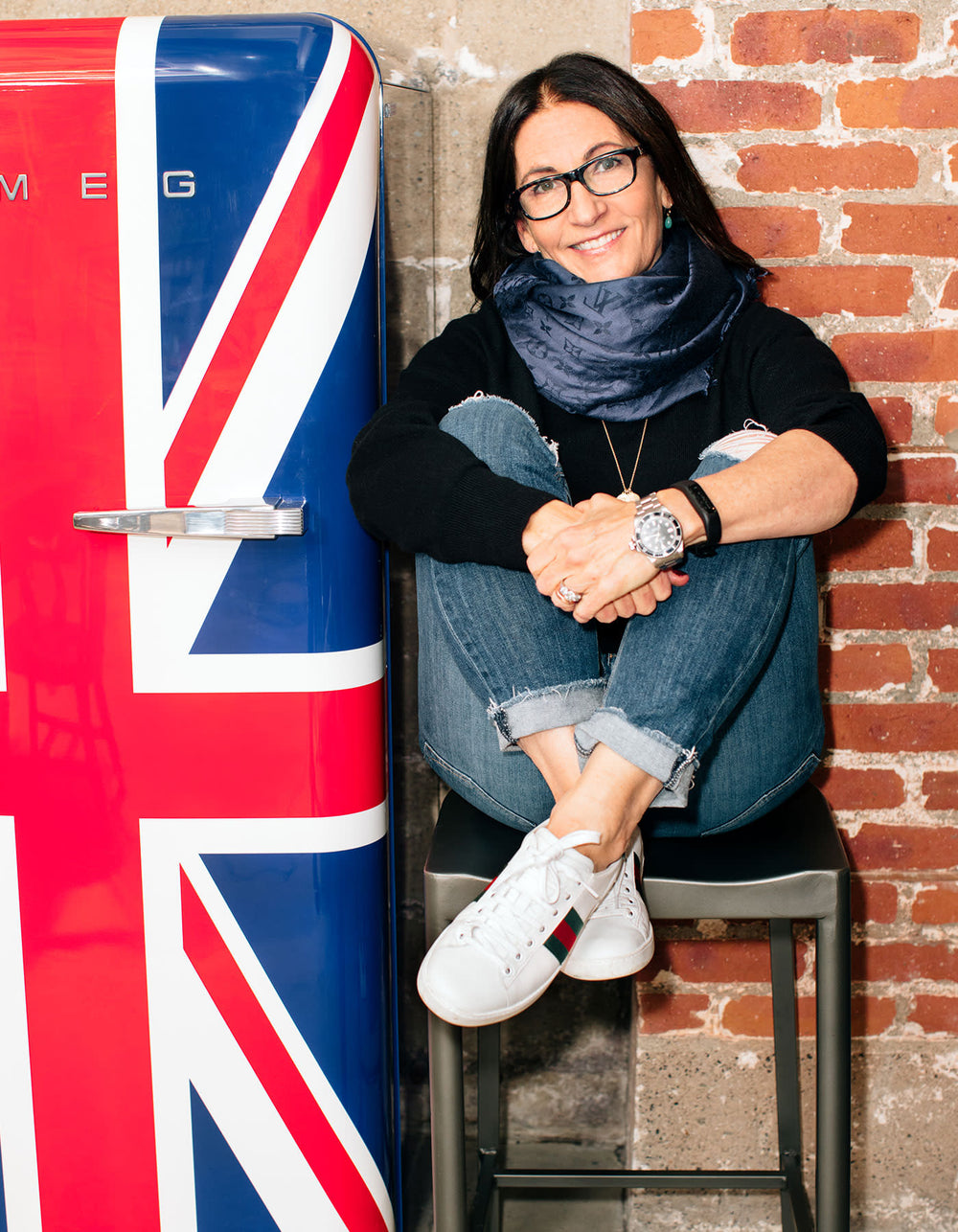Diary / Beauty / Apr 17, 2023
How To Choose the Right Concealer Shade
Written by: Piper Gray
Photography by: Ben Ritter & Jon Paterson

Even if you don’t consistently deal with skin issues like dark circles, acne, or redness, learning which concealer shade works with your skin tone will help you achieve a natural no-makeup look, with as much or as little coverage as you like.
Below, we'll take a look at how to pick the best shade of concealer for your skin for every season.
What Is Concealer Used For?
While foundation can give you a good base for an even complexion, you may have some skin concerns that need extra coverage. Everyone has experienced late nights that lead to dark circles or stubborn blemishes that pop up at the most inconvenient times. Even if your skin is usually issue-free, adding concealer to even the simplest makeup routine can elevate your look.
The most important thing is to pick the right concealer shade. The wrong shade can work against you and even make those areas you are trying to conceal even more noticeable, while the right shade will make your complexion smooth and flawless.
First, you’ll need to figure out what your skin’s undertone is—and yes, there’s a difference between that and skin tone.

How Do I Determine My Undertone?
Skin tone is pretty easy to determine. It is simply the color of your skin on the surface. While the basic skin tones are fair, light, medium, tan, or deep, you may have seen combinations of those words or read other similar terms.
Skin tones can change depending on the season and how much time you spend in the sun. You may need a lighter shade for the winter and a darker shade for the summer.
But when it comes to choosing the right concealer, matching the apparent color of your skin is important. However, just as important is your skin’s undertone, so let’s dive into determining your undertone.
What Is Skin Undertone?
Have you ever picked out a foundation or concealer that was a good match for your skin tone, but when you applied it, something just didn’t look quite right? You may have selected foundation or concealer for a different skin undertone. Once you understand your skin’s undertone, your face makeup will blend more seamlessly into your skin, achieving the ideal no-makeup makeup look.
Undertone refers to the hue beneath the surface of your skin. Unlike skin tone, the undertone does not change as you get pale or tan. Two people may have the same skin tone, but their undertones may differ.
How Many Undertones Are There?
There are three categories of undertones: warm, cool, and neutral.
Warm undertones are golden, yellow, or peachy, while cool undertones are pink and bluish. Neutral undertones are right in the middle—they are neither yellow or golden nor pink or blue.
This is where makeup mishaps can occur. If you choose makeup with the wrong undertone, it will not blend into your skin properly. Those with cool undertones will look yellowish if they choose warm undertone makeup, while people with warm undertones will look paler if they apply cool undertone makeup.
“Neutral” sounds like it could be worn by anyone, but they can still throw your complexion off if you do not actually have a neutral undertone. Cool undertones will look yellow, and warm undertones will look gray when using a foundation or concealer made for those with neutral undertones.
How to Determine Undertone
There are a couple of ways to determine your skin’s undertone in order to pick out the right shades for your skin.
Look at Your Veins
Flip your arm so that your palm is facing up, and look at the veins in your arm. If your veins appear to be blue, then you have cool undertones.
Veins that appear to be green in color are indicative of warm undertones. If you cannot tell if your veins are blue or green, then you likely have neutral undertones.
Grab Some White Paper
Take a piece of printer paper into a well-lit bathroom. Compare your complexion to the paper. If your complexion looks yellow next to the paper, you probably have warm undertones. If your complexion looks pink next to the paper, you probably have cool undertones. You can likely count yourself as a neutral undertone if you cannot identify any yellow or pink in comparison to the white sheet of paper.
Check Your Jewelry
This isn’t a foolproof method because what everyone considers “flattering” is subjective, but if you have any metal jewelry on hand, you can see how the silver and gold compare. If you prefer how silver jewelry looks against your skin, then your undertone is likely cool. Gold jewelry will likely suit your skin better if your undertones are warm, but if you like silver and gold jewelry, your undertone is probably neutral.
Now that you know your undertones, picking your concealer shade will be even easier.

Picking Your Concealer Shades
We recommend picking at least three shades of concealer—not just one shade. You’ll want a shade that matches your skin perfectly, then a shade lighter and darker. This is because the shades needed will vary depending on what you are trying to cover. Fortunately, our Face Pencil is available in 25 shades so you have plenty of options to choose from.
While it may be easy to just pick the shade closest to your skin and run with it, think about the colors of concerns you want to cover. Under-eye circles have a bluish tint, while blemishes may appear red. You may not get the results you want if you try to cover both areas with the same shade of concealer. Ideally, you would use your lighter shade of concealer for under-eye circles to give your eyes a brightening boost.
The same goes for the areas of your face you want to correct. The apples of your cheeks may be slightly darker, but the skin along your jawline will be slightly lighter. Having the right shade of concealer will prevent you from having a polka-dot look across your face when you are correcting smaller areas that need more coverage, like scarring. And if you’re experiencing any purplish areas that you’d like to neutralize, peachy shades are your best bet. (But first, to more precisely apply your coverage, sharpen your shade of Face Pencil to achieve a finer point.)
If you aren’t sure where to start picking your concealer shades, we have a shade-matching quiz that will eliminate the guesswork.
Which Concealer Should I Use?
Jones Road’s Face Pencil is our own go-to concealer as the formula is non-chalky and blends seamlessly into your skin.
The pencil application makes it easy to get into tiny places, like the sides of your nose or the inner corners of your eyes. You can easily apply it with your fingers or a brush, like The Skin Brush, for more precision.
Ingredients are also important when choosing a concealer, and the Face Pencil is made with shea butter, which is packed with antioxidants, helping to calm any concerning areas on your skin.
Foundation or Concealer First?
If concealers are just a part of your makeup routine, and you use foundation as your base, you may want to consider applying your foundation first. Our What The Foundation is the perfect base, and then you can conceal any areas that the foundation did not cover.
Most professionals, the Jones Road team included, believe in applying foundation first, but there are some instances where it makes sense to apply concealer beforehand. For a better understanding of when that might be the case, read up for the whole explanation.
Tips for Application
When applying concealer, you want to ensure it is on prepped skin—whether this is on your face with the foundation already applied or if you are applying it directly to your skin for a natural, no-makeup look.
But first, your skin should be cleansed and moisturized. If you apply concealer to your undereye area, ensure your moisturizer has thoroughly absorbed into the skin, or the concealer may move around or look patchy. Our Light Moisture Cream is lightweight, fast-absorbing, and perfect for prepping your skin for makeup.
Bottom Line
Concealer is an absolute must for your makeup bag, even if you don’t need to cover any areas of major concern. It will help you achieve that no-makeup look that enhances all your natural features—just as long as you pick the right shade(s) for your skin tone and undertone.













































 Miracle Balm
Miracle Balm
 Just Enough Tinted Moisturizer
Just Enough Tinted Moisturizer
 What The Foundation
What The Foundation












